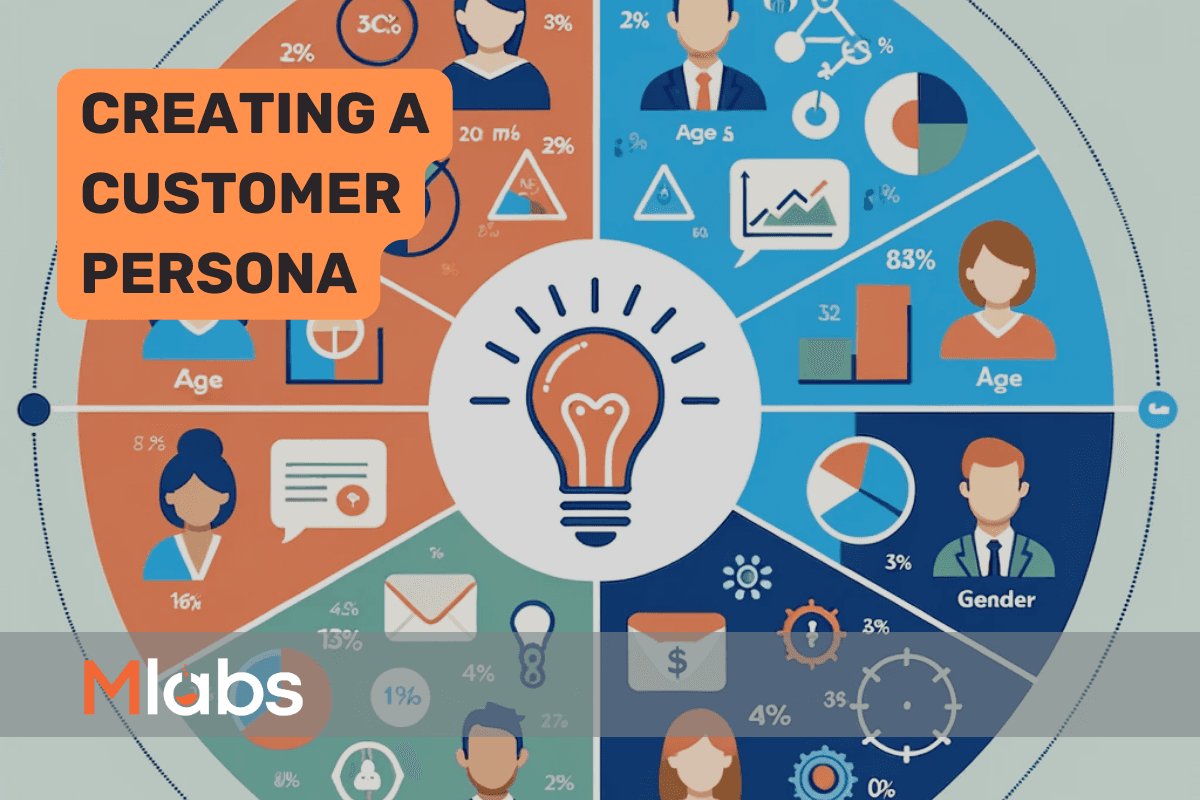
Simon Jenner
Friday 31 January 2025

A customer persona – sometimes referred to as a buyer persona or a user persona – is a semi-fictional character that represents your ideal customer.
Posted in:
Startups
Why Customer Personas Matter for Startups
Who exactly is your ideal customer? If you can’t answer that with confidence, your business might be running in the dark. For startups especially, having a clear vision of your target audience isn’t just helpful—it’s essential.
That’s where customer personas come in. Also known as buyer or user personas, these are detailed profiles that represent your perfect customer. They aren’t just guesses; they’re built from real market research and actual customer data. A well-defined persona helps shape everything—your product, marketing, sales strategy, and even the way you communicate with potential buyers. Without one, you're just hoping for the best.
Benefits of a Customer Persona
A well-defined customer persona provides multiple advantages for startups:
Improves product-market fit by ensuring your product aligns with real user needs.
Enhances marketing efficiency by helping create targeted messaging that speaks directly to your audience.
Optimizes sales funnels by anticipating customer concerns and addressing objections early.
Lowers customer acquisition cost (CAC) by focusing on the marketing channels and strategies that truly attract your audience.
Constructing a Customer Persona
Building a customer persona is like painting a detailed picture of your ideal customer. It should include but is not limited to:
Demographics: Age, gender, income, location, education, etc.
Profession: Job role, industry, responsibilities, skills, etc.
Values and Fears: Objectives, pain points, success factors, motivations, challenges, etc.
Behavior Patterns: Preferred communication platforms, lifestyle, product usage habits, brand loyalties, etc.
Purchasing Decision Journey: Sources they rely on for research, decision-making factors, objections, and buying process.
How to Create a Customer Persona for Your Startup
1. Define Your Business Offering and Value Proposition
Before identifying customer personas, you need clarity on what your startup offers. Ask:
What problem does my product solve?
Who benefits the most from this solution?
What makes my offering unique?
A clear value proposition forms the foundation for defining customer personas.
2. Gather Data from Real Customers and Market Research
Companies using detailed customer personas saw a 171% increase in marketing-generated revenue. Therefore, your personas should be based on real data, not assumptions. Collect insights from:
Website Analytics (Google Analytics, Hotjar, Mixpanel) – Identify visitor demographics, browsing behaviors, and referral sources.
Social Media Insights (Facebook Audience Insights, LinkedIn Analytics, Twitter Analytics) – Learn about audience demographics and engagement trends.
Customer Surveys & Interviews – Speak with real customers to gain deeper insights.
Competitor Research – Analyze who your competitors are targeting and how they engage them.
3. Identify Key Demographics
Define the key demographic characteristics of your ideal customers:
Age: What is the typical age range of your customers?
Gender: Is your product gender-specific or unisex?
Location: Where do your ideal customers live?
Income Level: What is their estimated purchasing power?
Education & Occupation: What jobs do they hold? What industries are they in?
4. Understand Their Behaviors and Pain Points
Customer-centric startups grow 60% faster than those without targeted customer strategies. So go beyond demographics and uncover behavioral and psychological aspects that influence buying decisions:
What problems or frustrations do they experience?
What solutions have they already tried?
What features would persuade them to choose your product?
What hesitations or objections might they have?
5. Map Out Customer Goals and Motivations
What are their primary short-term and long-term goals?
How does your product help them achieve these goals?
What emotions drive their purchasing decisions (e.g., convenience, cost-savings, social status)?
6. Determine Where They Find Information
77% of consumers prefer brands that personalize interactions based on customer data. Understanding where your customers spend time online is crucial for effective marketing. Consider:
Which websites, blogs, or publications do they follow?
What search terms are they using?
Which social media platforms do they engage with the most?
7. Example of a Customer Persona
To illustrate, let’s consider a startup that has developed a productivity app for professionals. A potential persona could be:
Name: Organized Oscar
Age: 30-40 years old
Gender: Male
Location: Urban cities
Profession: Middle-management in tech companies
Values/Fears: Values efficiency and productivity, fears wasting time on mundane tasks
Behavior Patterns: Regular user of productivity tools, stays updated on tech trends, active on LinkedIn and Twitter
Purchasing Decisions: Researches online and relies on professional reviews before purchasing
How to Use Customer Personas in Your Startup
1. Refine Product Development
A well-crafted persona helps startups prioritize features that truly matter to customers. It aligns product decisions with actual user needs.
2. Improve Marketing Messaging & Targeting
Your website copy, ads, and email campaigns should directly address your persona’s pain points and desires, increasing conversions and engagement.
3. Optimize Sales Funnels
Knowing how your persona makes purchasing decisions helps refine your sales strategy, whether they prefer free trials, demos, or in-depth comparisons.
4. Align Your Entire Team
Personas help marketing, sales, and product teams stay aligned on who they are serving and how to best meet their needs.
Key Takeaways
Customer personas are essential for startups to create effective marketing, product, and sales strategies.
Start with real data by leveraging surveys, analytics, and customer interviews.
Define key demographics and behaviors to paint a clear picture of your ideal audience.
Identify pain points and motivations to tailor messaging and solutions.
Understand where they consume content to optimize your marketing channels.
Use personas across all teams to align goals and create a customer-centric business.
Ready to Define Your Ideal Customer?
If you’re looking to build a customer-focused startup but need expert guidance, Million Labs can help. Our team specializes in helping startups refine their customer acquisition and marketing strategies for maximum impact.
Book a Discovery Call Today and let’s craft your ideal customer persona together!
Check more recommended resources to Start, Launch and Grow your SaaS:
Ready to launch your startup idea with an MVP?
Download our step by step guide for non-technical founders to create a startup Minimum Viable Product (MVP)
Get the eBook

